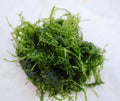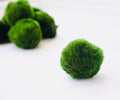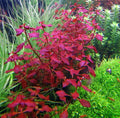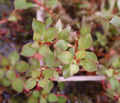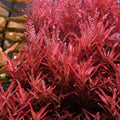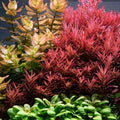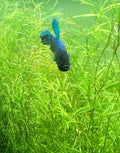Why Keep Mystery Snails?
So why keep mystery snails? I think one of the reasons why a lot of people get mystery snails is because they hear that they are really good at cleaning off algae. They're also really good scavengers, and they're super peaceful. They come in a lot of cool colors, and they can be fun and interesting to watch.
The Setup
So let's talk about how to keep mystery snails successfully. A 20-gallon long tank can be good for housing some guppies, and it is also great for housing some mystery snails. And this has become a rather productive breeding tank for us when it comes to mystery snails.
We are going to be talking about how to care for them, how to breed them, and where they come from.
Size and Color
Now these are really cool little animals to have in a fish tank. They don't get super huge—so you're maybe looking at an inch and a half, maybe 2 inches max. So they're not going to get super big. The coloration is really cool because you can get all different types of colors.
For the gold mystery snail with a little bit of algae, it's got kind of a green tint to it, but they come in all kinds of different colors—gold and black and blue—and there are also some with some patterns on them.
Behavior and Benefits
I think what people really enjoy about them is they clean algae, and they go through the detritus; they eat dead plant leaves, which is really nice. They are super peaceful—so this is not a type of organism you're going to want in a tank where you've got some semi-aggressive fish. So it kind of provides a benefit in that way.
Compatible Tank Mates
Because they are so peaceful, we do have to consider our tank mates. They go really well with freshwater shrimp and bristlenose. I would exercise a little bit of caution, especially if you want to breed them.
Small tetras, guppies, rasboras, and something like a hatchet fish, which is just going to stay at the top of the tank—all those might be good options.
But we really want to stay with small, non-aggressive fish that generally feed in midwater and topwater. That's going to reduce the likelihood that they make a snack out of your mystery snails.
What to Avoid
Now something else to consider. When it comes to tank mates, stay away from cichlids—almost all types of cichlids are either going to eat the snails or they're going to pick at them potentially. So we really want to be careful with semi-aggressive fish. Any type of loach, like I said, or cichlids would really probably not be a good choice.
Water Parameters
When it comes to temperature, the standard aquarium temperatures are going to be pretty good—so somewhere in the 70s.
Now there are a couple of water parameters that are really important. Make sure you are controlling ammonia and nitrites and nitrates when you're keeping snails—they are very sensitive to all three. pH is also important.
I think one of the reasons why some people may have bad luck with snails in general is the pH is too low, and if the pH goes too low, their shells will start to break down.
So if you can get above neutral—ideally in those upper sevens—that's probably going to be better for the snails than a lower pH, because that lower pH is going to have an impact on the calcium carbonate that they need in order to keep their shells healthy.
Water Hardness
Along with pH, we also have to talk a little bit about water hardness. Once again, for people who have bad luck with snails, generally speaking, water hardness may be an issue.
Feeding
Snails are really, really easy to feed. A lot of times when people buy snails, it's because they want to have algae control—and they do eat algae. They will keep a tank looking pretty good. We make zero effort to scrape algae off of any surface. And I think they're doing a pretty good job of keeping the tanks looking good.
Now one thing to keep in mind—if you're going to be buying snails to control algae and they get that algae in check, make sure you have food for them to eat, because one of the things that can really kill snails is starvation.
They are constantly munching on stuff like detritus, the algae that we have in the tank. But once that stuff has gotten under control, we want to feed them. So one of the things that I do on a tank like this is I will drop some food in after the lights go off. I'll throw in some algae wafers and some sinking pellets—and I put enough food in there so that when I wake up in the morning everything is gone. If I wake up and there's still food in the tank, I know that I've probably fed them a little too much.
Tank Size
Let's talk a little bit about tank size. Most internet sources will tell you somewhere between a 5- and a 10-gallon tank is a good minimum. But I would prefer a 10g or larger to house a mystery snail or two.
Decorations and Surfaces
When it comes to how you decorate that tank, surface area is a nice thing because surface area will allow for biofilms to form; it'll allow for algae to grow. In a 20-gallon tank you can have driftwood, rocks, and live plants—and all of those things work out wonderfully. The cool thing about snails in a planted tank is they will eat dying leaves.
Tank Safety
Be careful about how you cover your tank. Mystery snails need a tight cover on their tank, or they sometimes will leave—and that's not a good thing. So we want to have a nice tight-fitting lid. Also, watch your filter intake.
What happens is the mystery snails inevitably go over there, and they wind up getting their heads stuck in the intake. It happens—and it's kind of a pain when that happens.
So you've got to shut the filter down, take the intake off, and hopefully they can kind of figure it out on their own.
Filtration
When it comes to filtration, I have used hang-on-the-backs before. I think sponge filters are a very safe way to go as well, certainly more so than a canister filter, but just keep the intake sponges on them.
On the next blog, we will talk about how to breed these mystery snails...



